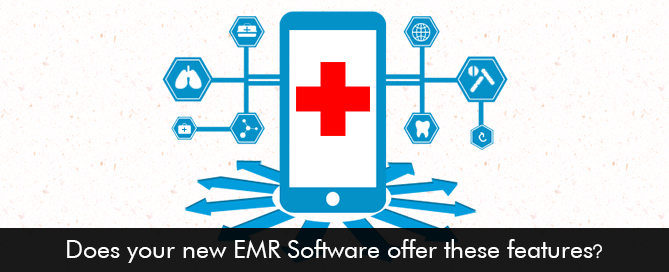An Electronic Medical Records (EMR) Software provides an efficient method to manage all the patient data that is recorded by a medical practice before, during, and after the visit of the patient. This might not seem to be that important of a task but in the modern age, proper data collection and management can give practices control over a lot of tasks and help them significantly increase the quality of healthcare they provide. For this purpose, selecting the right Electronic Health Records (EHR) Software is essential for practices of all sizes and specialties.
EMR Software Systems these days come with a wide range of features and functionalities but not all features are as essential for practices as some are. Thus, while purchasing an EHR Solution for your healthcare practice, make sure that it has the following features.
Patient Management Tools
The basic function of an EMR Software is to manage patient data. But when the collection of that data is to be made from the patients directly, the ease of access that the software provides to the patients must be kept under consideration. Patients must be able to interact and communicate efficiently with their healthcare providers to make sure that they get the best service possible.
Practices can make sure the patients get an interactive experience via a Patient Portal Software or a Patient Engagement Software.
Electronic Prescriptions
The EHR Software must be able to generate electronic prescriptions via an e-Prescribing (e-Rx) tool and automatically send these prescriptions to patient-preferred medical stores.
Automated Appointments
A Patient Scheduling Tool within an EMR System must be able to automatically book appointments and update an electronic calendar. This tool also sends appointment reminders automatically to patients when they are due.
Cloud Hosting
A Cloud-Based EMR Software not only reduces the initial implementation costs for the practices but also makes the updates and debugging procedures hassle-free since everything is to be operated by the vendors on the cloud-based server themselves and nothing is to be changed on-site.
Interoperability of the Software
Most practices use more than one software to handle different tasks e.g. a Medical Billing Software or a Practice Management (PM) Software. Your EMR Software System must be able to integrate with these other software to provide maximum efficiency in the workflow. The interoperability feature will handle this task for you. It will automatically integrate your EHR System with all these software.
Convenient User-Interface
The design of the user-interface affects the workflow of the staff and the physicians in a sense that if it is designed to be more convenient, it makes the software easy to navigate and understand. The physicians and the practice staff get comfortable with the software faster and all their tasks get streamlined.








